Wildlife rehabilitation can be a heartwarming – and heartbreaking – endeavor, but thanks to humans who care, this Great Horned Owl got a second chance.
You never know when you’ll get the call, who it will be, or how it will turn out, but being connected to wildlife rescue and rehab offers humbling lessons in kindness, tenacity, and hope.
Encounter Date: April 11 – June 3, 2022
For the last few years, I’ve had the privilege of participating in a smattering of wildlife rescue work – squirrels, chipmunks, songbirds, raptors, raccoons, possums, deer – and every encounter leaves me feeling like I’m earning my Disney Princess badges, one species at a time. Living on a small island offers unique challenges – it’s hard for support services to get to you or for you to get to them. Who do you even call?
It Always Starts With a Kind Human
In the case of our Great Horned Owl, an islander saw him on her neighbor’s deck and noticed that he wasn’t moving around. We are fortunate to have a certified wildlife rehabber who lives part-time on the island, and locals have learned to ask around for her number – or contact me, if they don’t have her info. Ideally, she is on-island and can head over to assess wildlife concerns.
April 11th was Mr. GHO’s lucky day and the rehabber headed right over when she got the call. I usually tag along for assessments and pickups, but this time I was off-island, so my primary role in this rescue was helping communicate status and updates back to the community as we learned more.

Assessing Wildlife
This certified wildlife rehabilitator specializes in small mammals, but in her many years in the field she has encountered a wide array of wildlife that needed interim assessment and transport to a specialist. She contacted a local colleague who specializes in raptor rehabilitation and they walked through an initial assessment together.
The assessment, based on lethargy and a very pale color inside his mouth, was that this GHO had likely eaten prey that had consumed rat poison. It’s an unfortunately common – and usually fatal – occurrence for raptors, who rely on rodentia as a mainstay of their diets. Because public education is one of my passions and our community was already engaged by the story of this rescue, I took the opportunity to raise awareness of the dangers of rat poison and available alternatives.
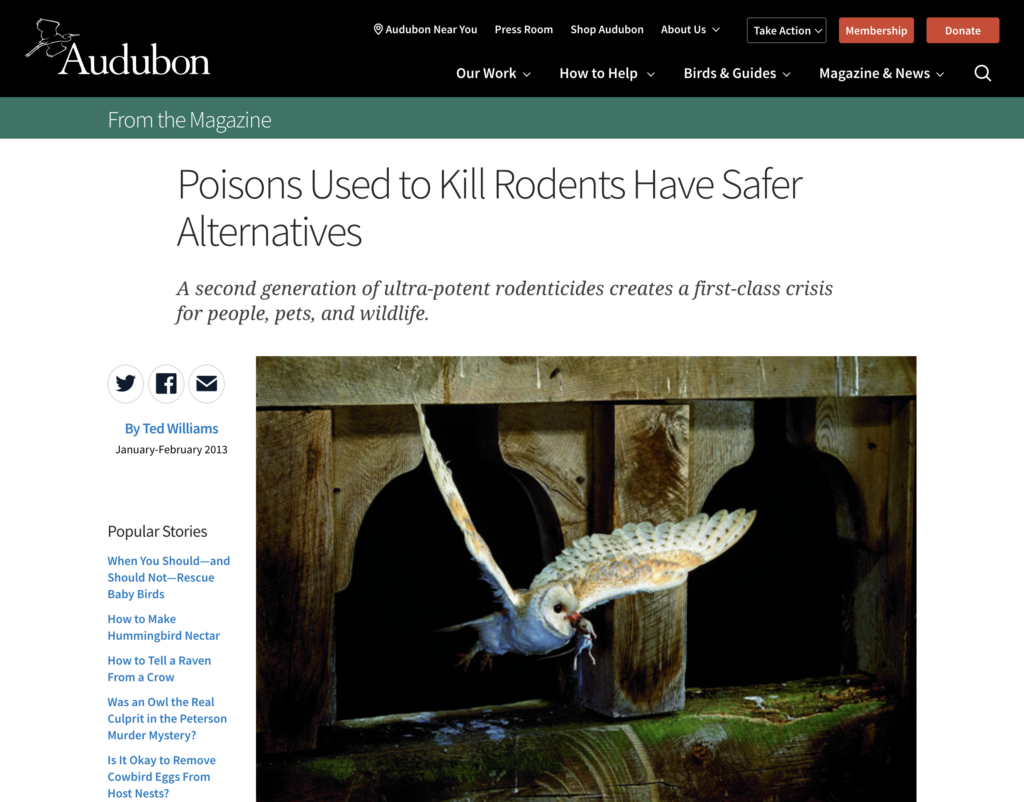
What does rat poison do?
Rat poison is an anticoagulant, not a poison. So when a rat/ dog/ cat/ coyote/ deer/ raccoon/ possum eats it, they bleed out for days. When a raptor (or other predator) eats the prey who consumed it, they likewise experience this slow, awful death.
When someone chooses to use rat poison, they are not poisoning a rat, they’re killing links in our food chain and endangering pets. Many dog owners whose beloved family member had eaten a rat or mouse wind up seeking emergency services. Rat poison is not just a wildlife danger. PLEASE CONSIDER ALTERNATIVES. This is a great article from Audubon on other methods of pest control. https://www.audubon.org/magazine/january-february-2013/poisons-used-kill-rodents-have-safer
A Glimmer of Hope
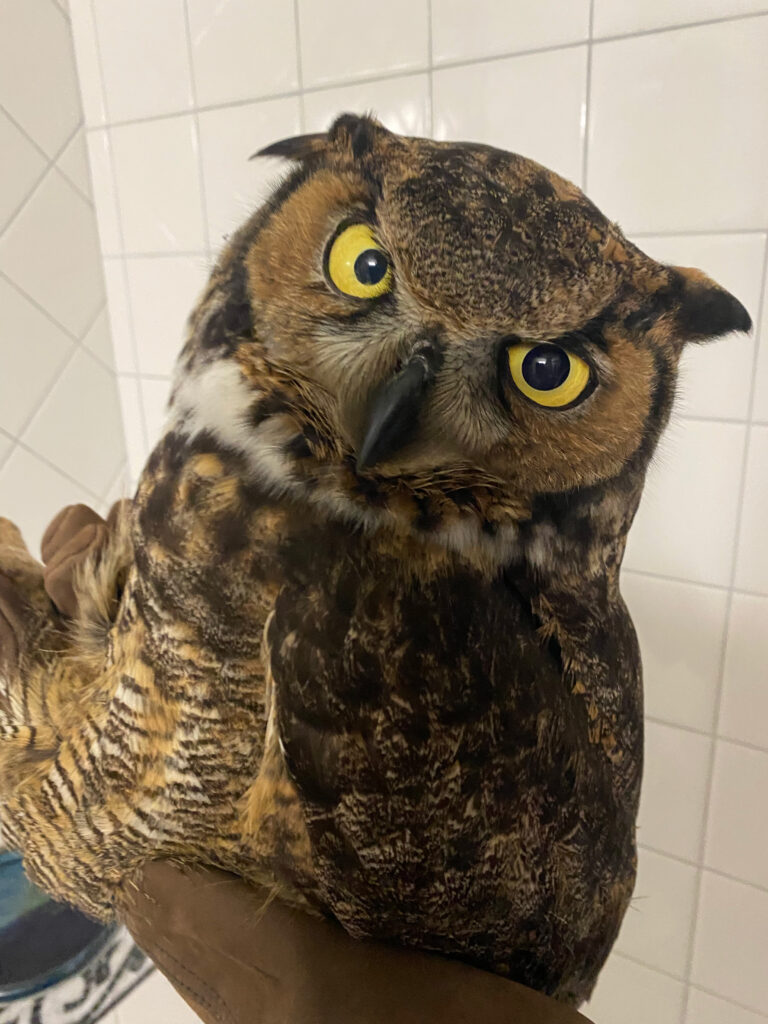
Even though the odds were stacked against him, the rehabber did what rehabbers do: provide safety and care with tenacity until you either confirm there is no option for recovery and intervene or the being in your care passes on their own. Each case is unique. Each case takes a balance of optimism and pragmatism that can be tough to sustain. I so deeply admire the work that rehabbers do and their ability to care and try and fight, but also to make the hard choice when it’s the right choice.
We didn’t expect our owl friend to make it through the night, so when she texted me this photo in the morning, we were thrilled. This was a huge milestone! It meant that the next step was to get him to a specialist immediately.
Our raptor specialist transferred the patient to a larger facility in the area – one with 24/7 wildlife vets on staff and more resources to support wildlife with greater care needs.
For about 2 weeks, we managed to get small, but hopeful updates – that the owl had finally eaten, but wasn’t catching prey on its own, and that it was still in care. That news at least told us that our intervention had bought this being a fighting chance at recovery in the best hands.
The News You Always Want to Hear
On June 2nd, my rehabber texted me to share that our owl friend was headed back to the island for release the next day. After 54 days in care, he was ready to come home and be free!

On the evening of June 3rd, my partner and I grabbed the long lenses and met the rehabber at the location where the bird had been found. It was a gorgeous Pacific Northwest spring evening, damp from recent rain but sunny with a scattering of clouds.
Tell Me About His Recovery!
While we scanned for signs of crows that would mob our friend and considered areas that would allow him to fly into low-hanging branches, I asked about how his care progressed at their rehab center.
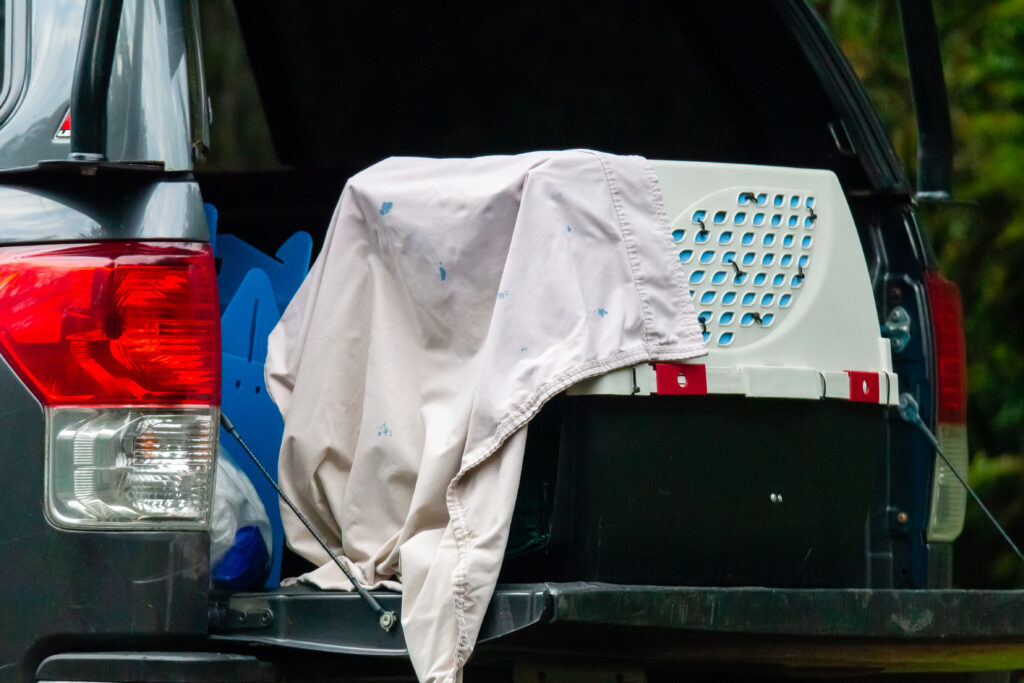
The reason you always, always take wildlife to a species specialist for care is that it takes years and special knowledge to properly care for and assess the health of a patient. Well-meaning humans can do a LOT of damage, even folks generally familiar with wildlife care. When you are NOT a specialist, you do the bare minimum to stabilize a patient – give them a quiet, cozy, dark, stress-free place to rest, often with a heating mat on low to help keep their body temp up, and depending on species, you may need to refrain from administering food…even overnight – and get them to a specialist as soon as you can.
In our case, my rahabber did standard things to stabilize the raptor and then handed him off. It turns out that the GHO’s injury was head trauma. They don’t often run into windows while chasing prey…usually that kind of trauma happens with fast-moving cars, which wasn’t a good fit for the area where this owl was found. The specialist said that the whole care team wracked their brains for an answer, but eventually just gave up and treated for head trauma.
It was slow going – much slower than most raptors. Even after the usual treatments, the owl wasn’t flying and still seemed disoriented, but he was eating. The care team was concerned that he may not be releasable, even if he did recover. Once they had a larger enclosure available (yay, rehabbed eagles released!), they offered him more space to stretch and strengthen his skills.
That did the trick! Soon, he was flying and owl-ing the way he should have been. From there, they monitored him until they were sure he was ready for release.
They Never Do What You Expect
After carefully selecting the release angle and positioning ourselves in an arc behind the exit zone, it was time for freedom.
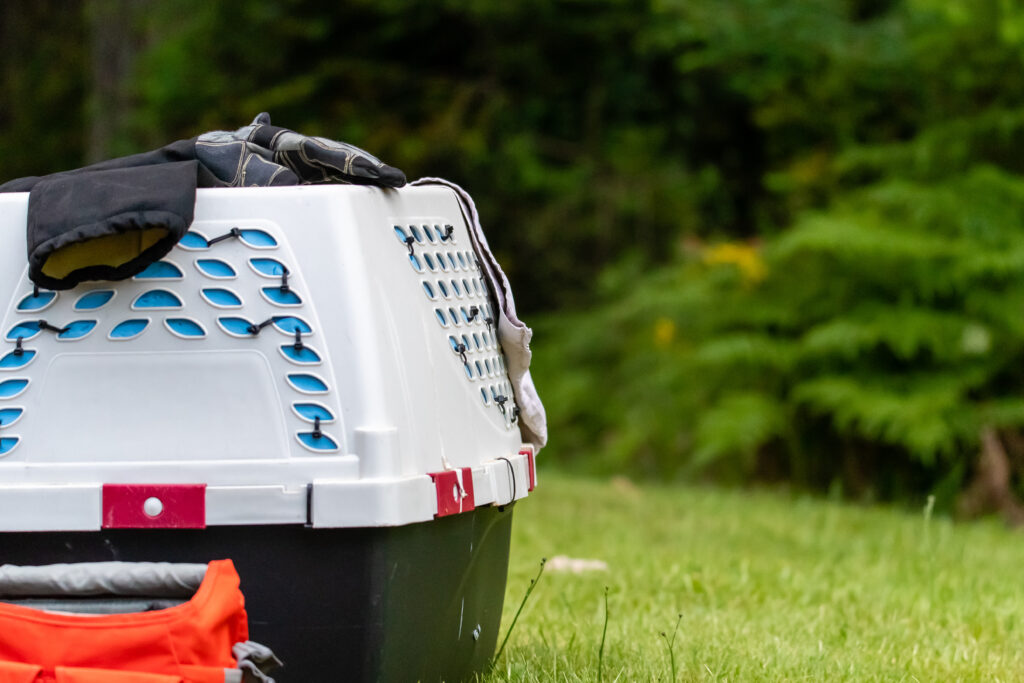
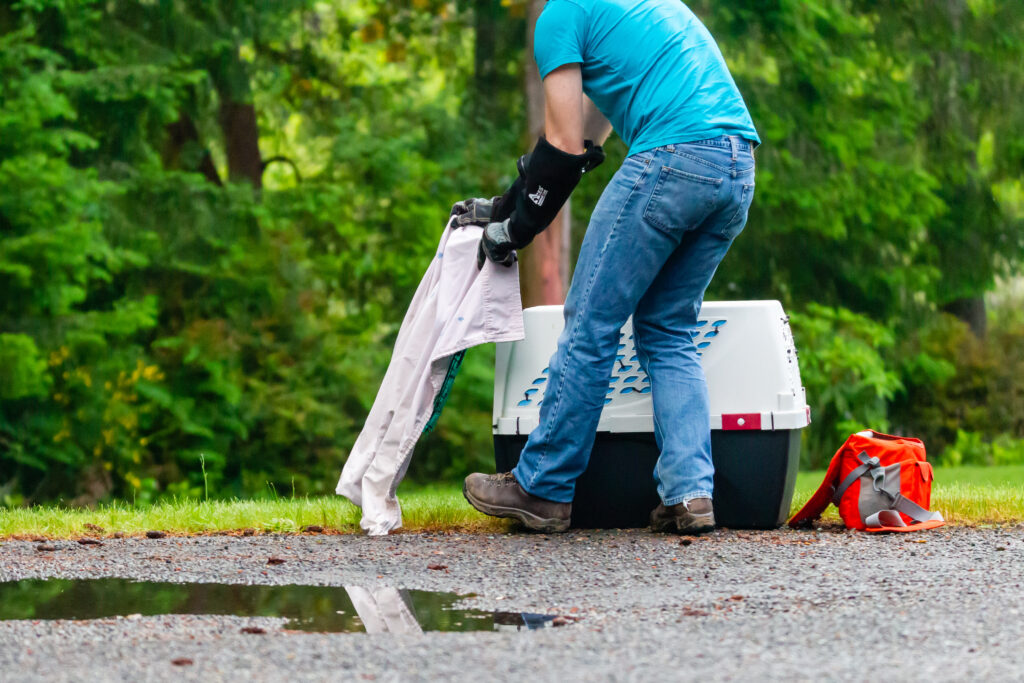
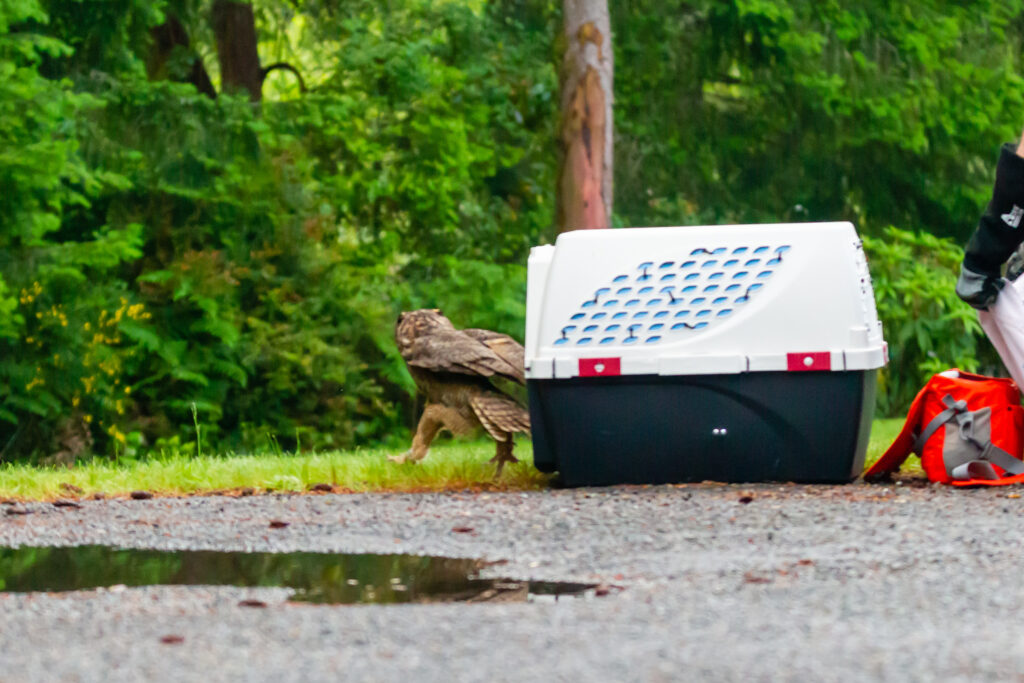
Instead of flying straight up into the trees in front of him, he U-ied and aimed for a wider target.
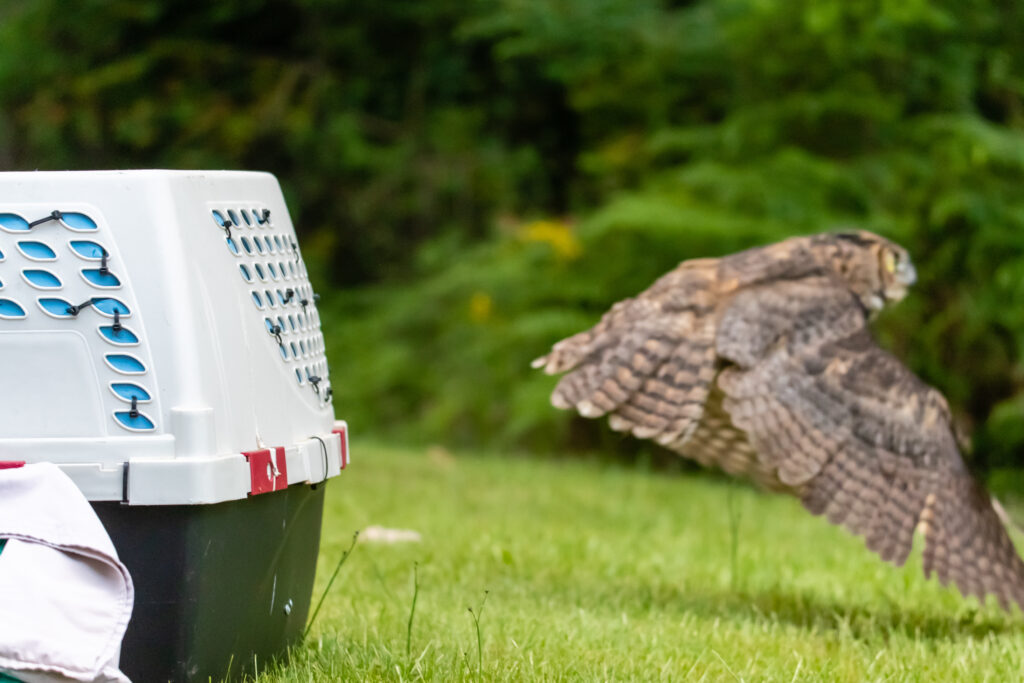
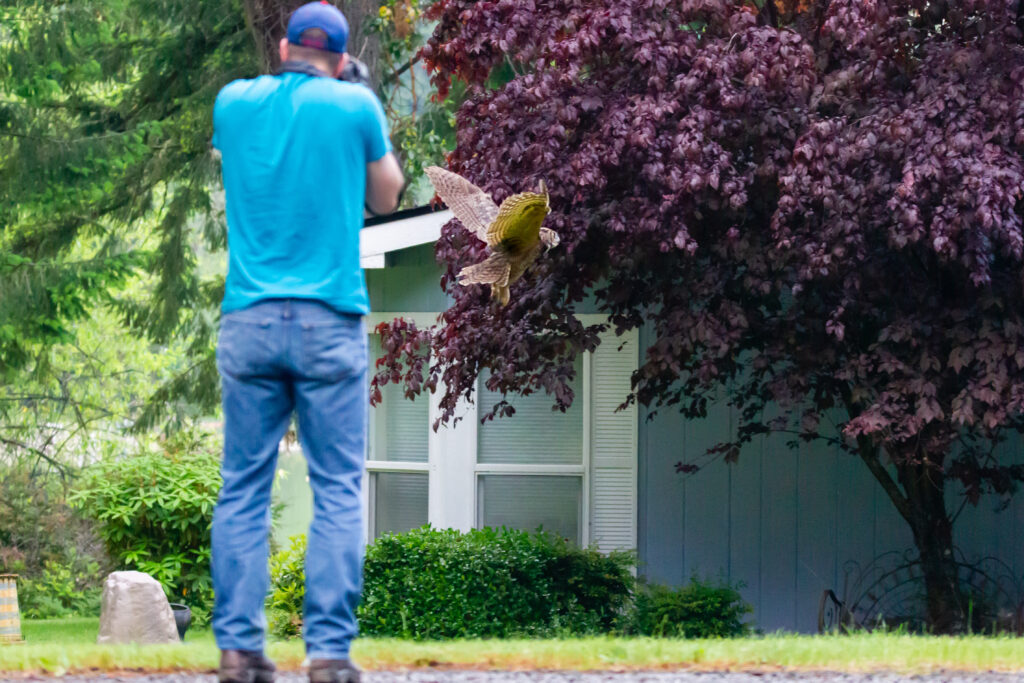
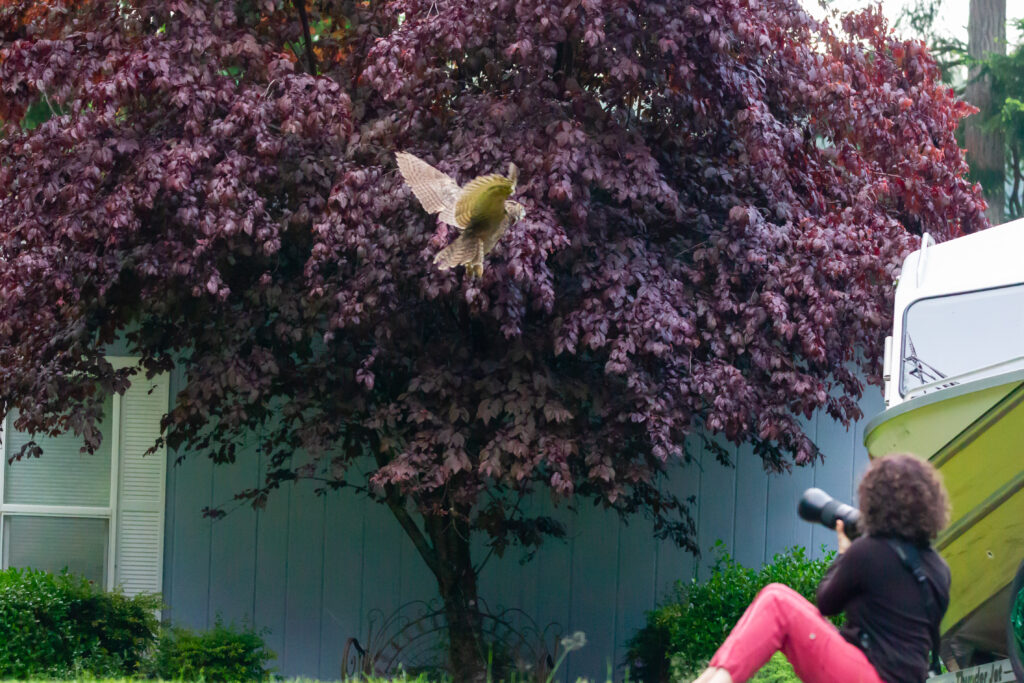
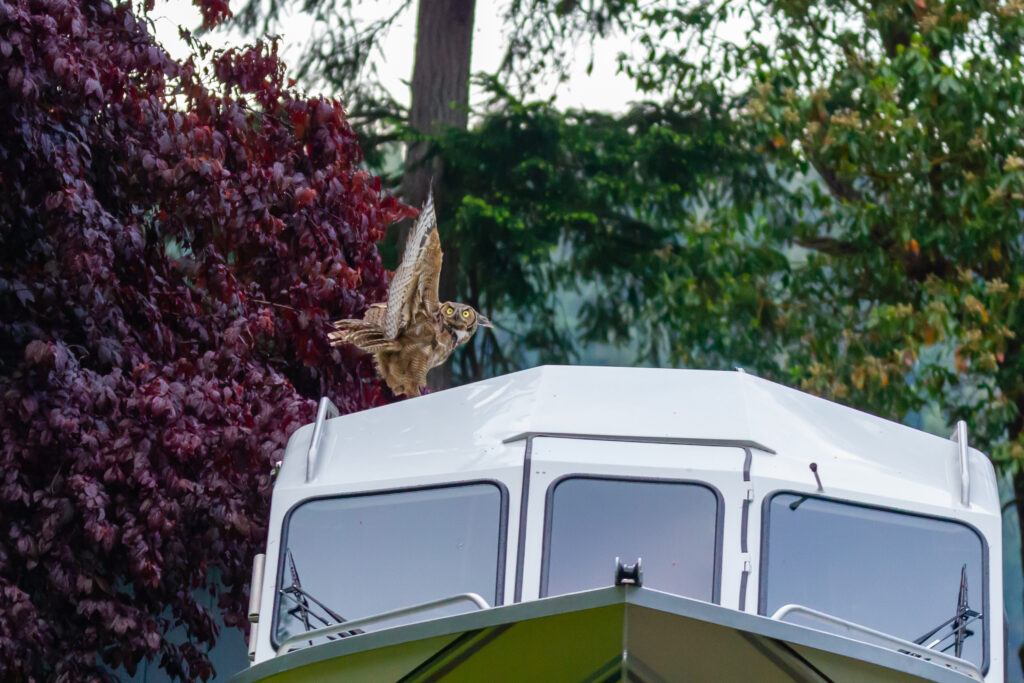
We all had a good laugh about his disdain for our best intentions while he took his sweet time looking around and getting oriented. Because of where he chose to land, I was way closer than I dreamed I would be for these long, precious moments observing his reintroduction to home.
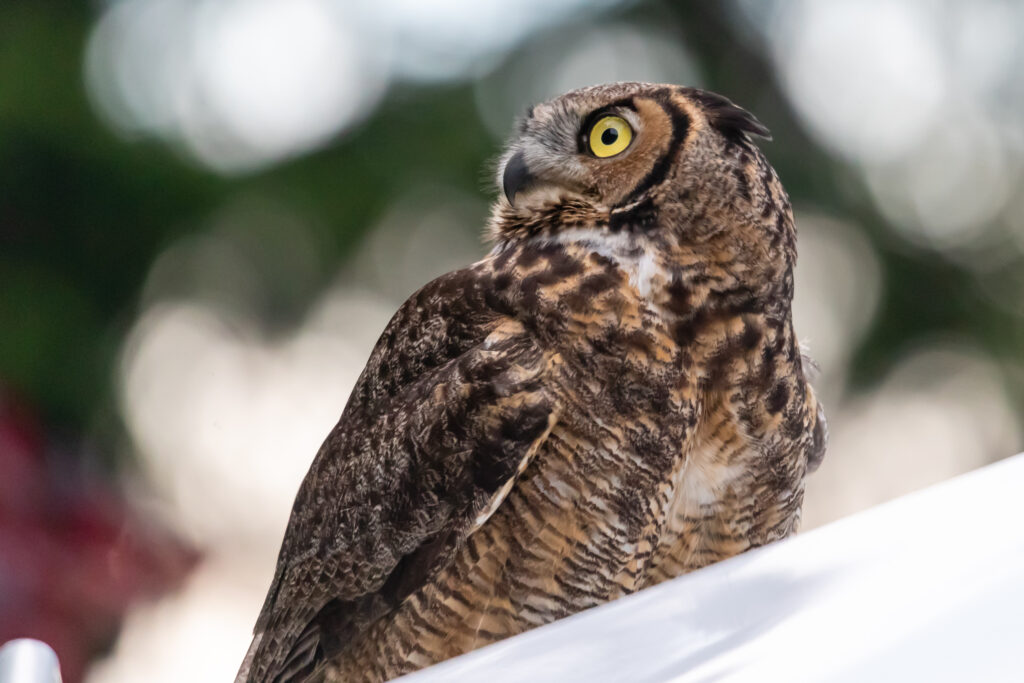
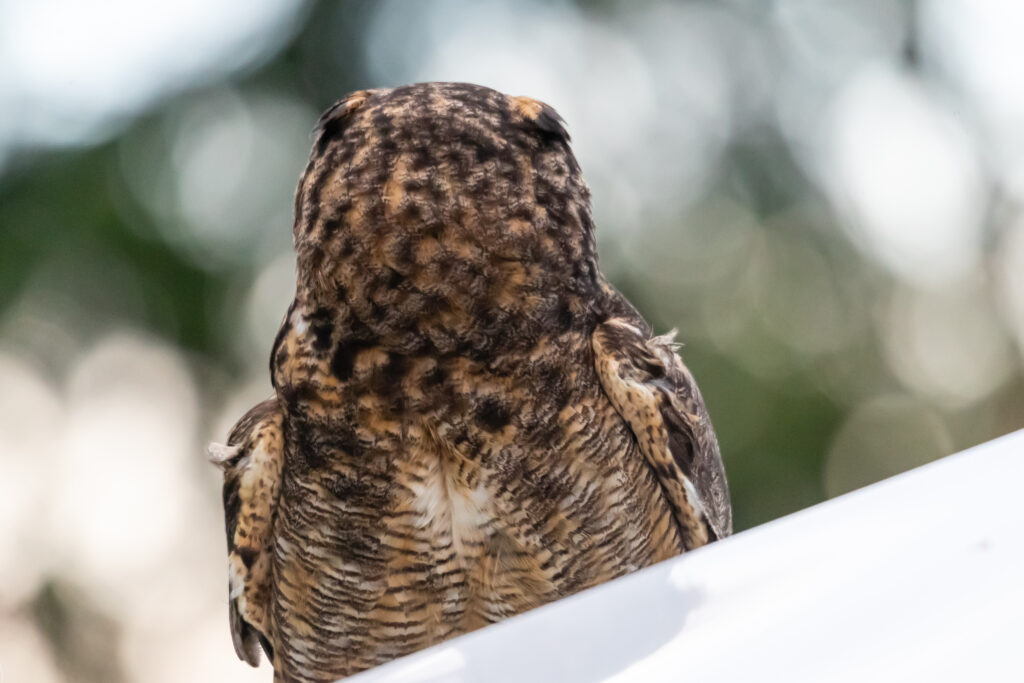

Up, Up and Away!
Eventually, the Great Horned Owl lifted up into the trees along the lake.
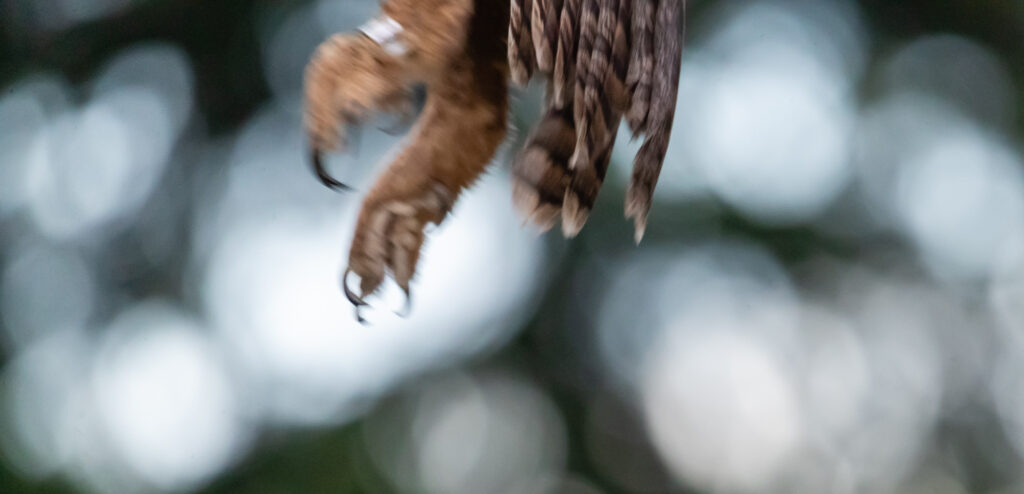
He sat in the tree long enough for me to lose sight of him (seriously, he blended so well), and as we chatted, we watched him take off and head along the bank of the lake and out of sight.

Happy Endings Are The Best!
Every wildlife rescue mission that ends in release is a huge win and a testament the goodness of humans who honor the beings they share this planet with. Each time I get a wildlife rescue call, my faith in humanity spikes. Every time I see a rehabber pull out all the stops to help a patient recover, I’m in awe. It’s also a joy to meet the people who do this work. The rehabber almost missed his ferry because we couldn’t stop talking!
It’s humbling and wonderful to have the chance to help this cycle of goodness.
He is beautiful so happy he made it